In general terms, a walkway is a clearly demarcated trail or path for walking. It can be paved, unpaved or constructed from wood or other materials, depending on the demands of the topography and terrain. We have selected the best examples of striking elevated walkways in nature and urban scape that offer breathtaking views of their gorgeous surroundings of nature and world-class architecture.
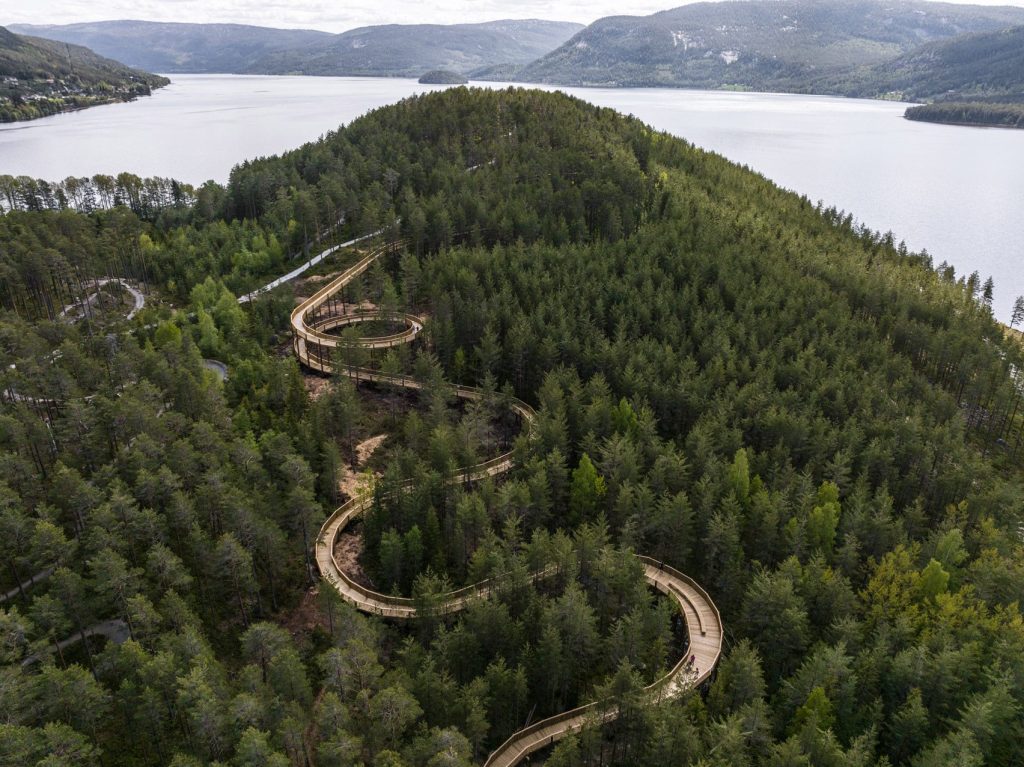
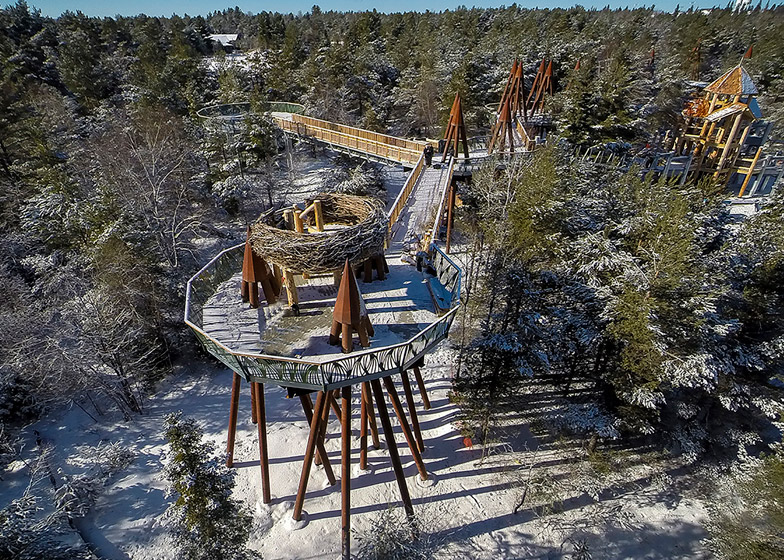
Wild Walk by Charles P Reay
Architect Charles P Reay has completed an elevated walkway within The Wild Center, a 32-hectare nature reserve operated by a non-profit organisation in the heart of the 2.5 million hectare Adirondack Park in Upstate New York.. The Wild Center’s aim is to encourage people to explore and understand the natural environment of the Adirondacks through science-based experiences, exhibits and events.
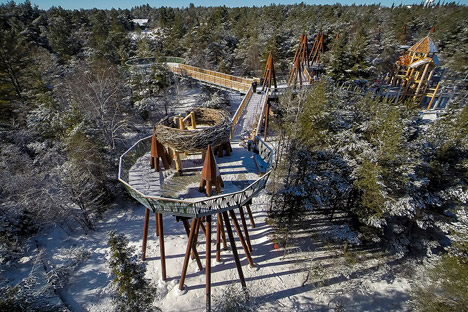
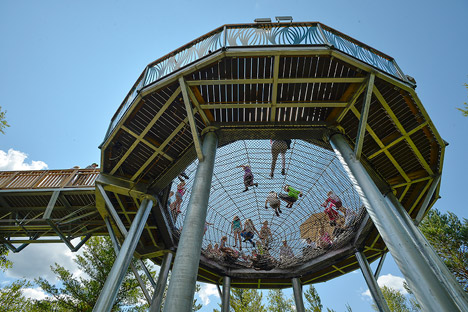
Wild Walk by Charles P Reay
Named the WIld Walk, the walkway offers visitors an opportunity to follow a trail of bridges that rises to a height of 12 metres above ground level so they can experience an alternative perspective of the forest. Among the project’s main influences is New York’s High Line project, which follows an elevated section of a former railroad in Manhattan, as well as a similar pathway that meanders through the treetops of a botanical garden in South Africa.
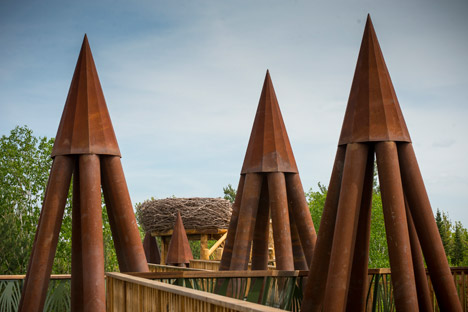
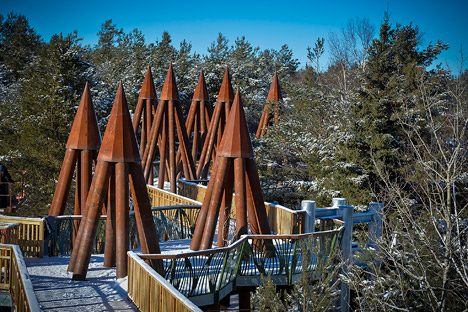
Wild Walk by Charles P Reay
The paths are supported by pointed towers made from pre-rusted steel tubes, which are intended to resemble trunks of the surrounding pine trees. Galvanised steel is used for other parts of the structure to reduce the total cost.
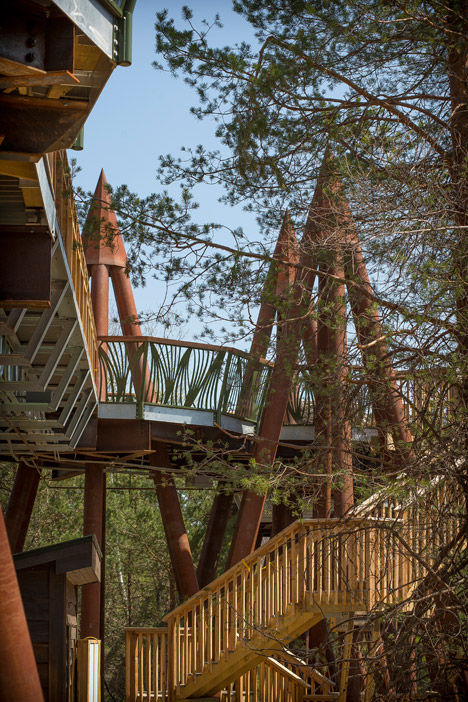
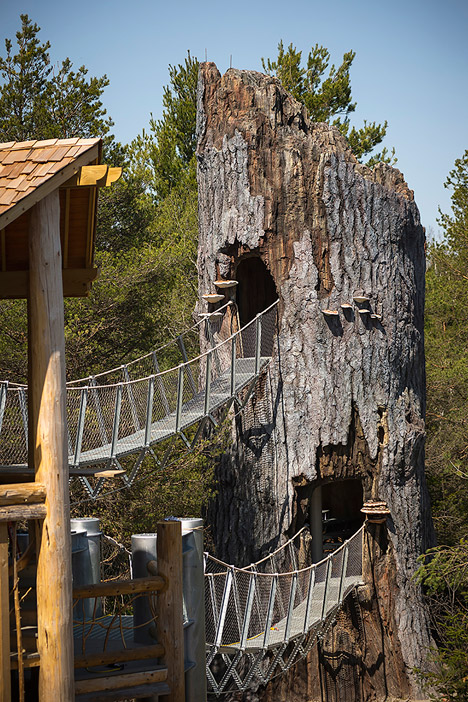
Wild Walk by Charles P Reay
The pathways lead visitors to a series of platforms that provide them with an alternative experience of the forest including a four-storey tree house with shingle-clad roofs and the Wild Walk’s highest point, which is shaped like a bald eagle’s nest.
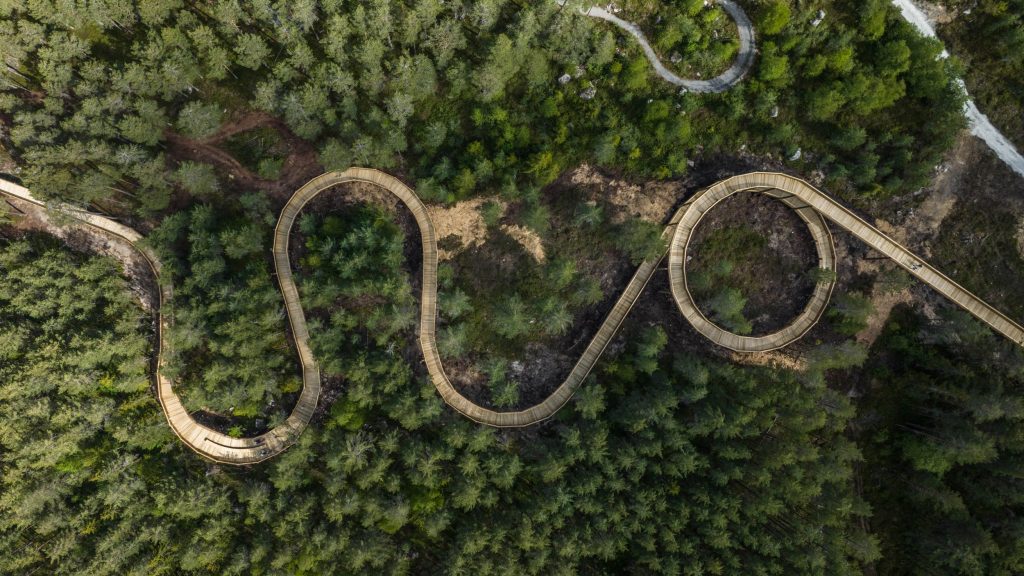
Treetop Walkway by EFFEKT in Hamaren Activity Park
Norway’s first treetop walkway has been developed in Hamaren Activity Park in Fyresdal, known for its islands and fjords, by Copenhagen-based architecture studio EFFEKT. Raised 15 metres high in the air, it meanders through the park to culminate at a circular viewpoint at 60 meters above lake water level with a diameter of 50 meters, which provides a spectacular 360-degree view over the pine forest, clear lakes and rock formation that make up the natural landscape.
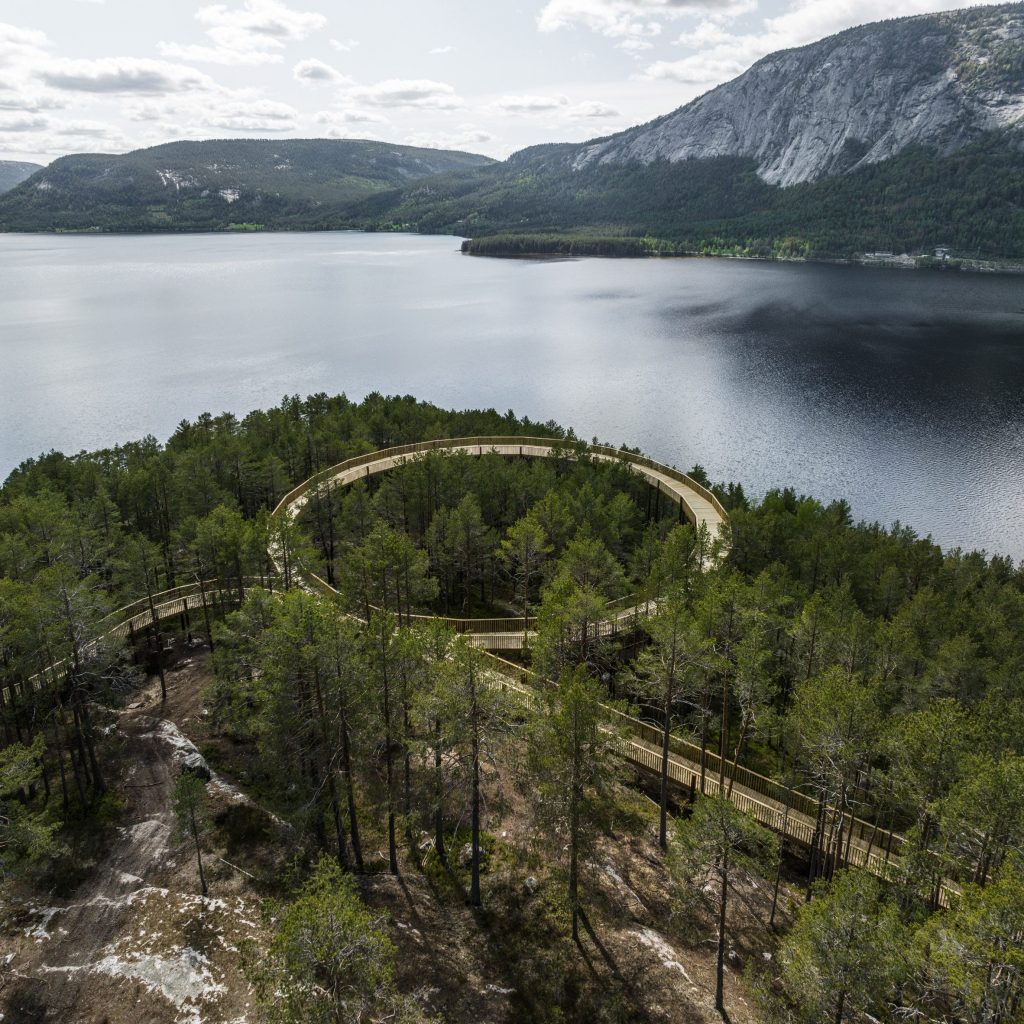
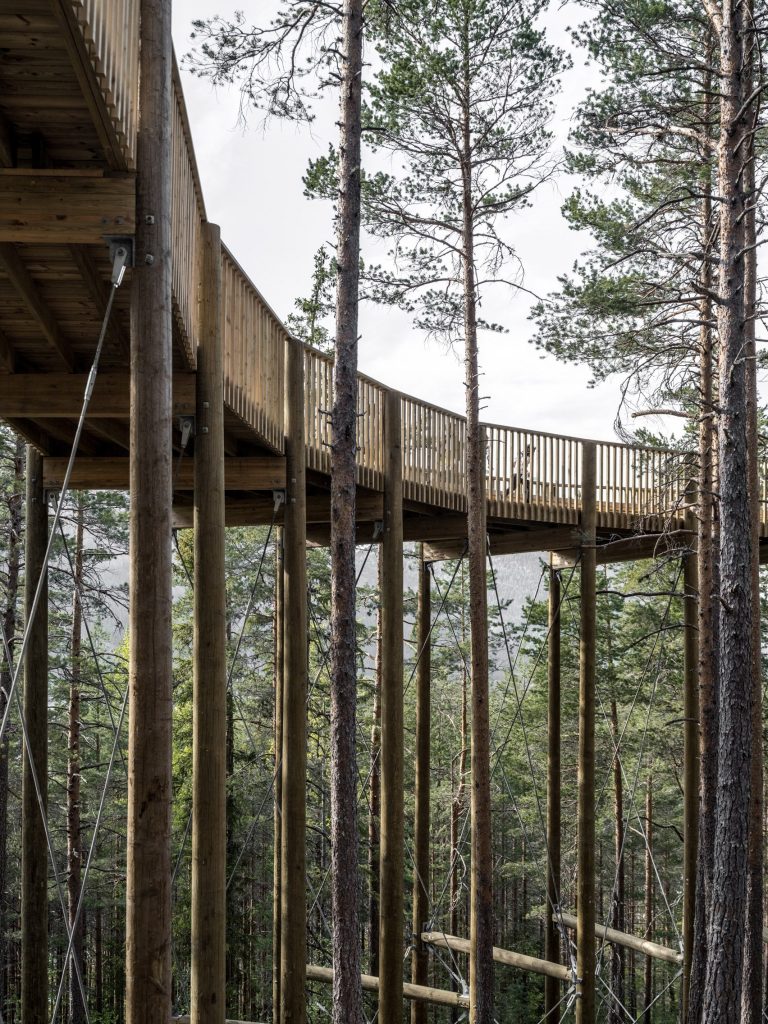
Treetop Walkway by EFFEKT in Hamaren Activity Park
The Treetop Walkway comprises a one kilometer long and two meters wide plank boardwalk that winds among the tree canopies, along the mountain ridge and up to the summit of the Klokkarhamaren hill, offering the walkers an opportunity to enjoy a scenic walk among treetops. The pathway is slightly inclined in a bid to provide an easy access to all nature lovers, regardless of age, disability or physical limitation, as well as cyclists, pushchairs and wheelchairs.
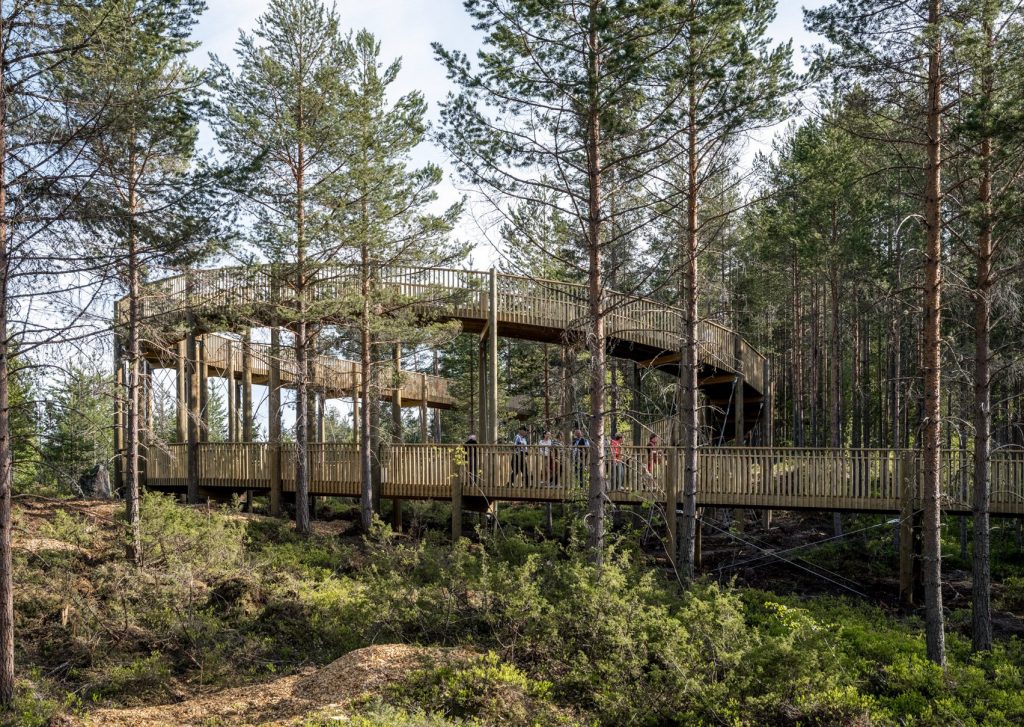
Treetop Walkway by EFFEKT in Hamaren Activity Park
The boardwalk literally blends with the surrounding forest thanks to the choice of the building material. To create an experience that would add to the already beautiful natural setting rather than destroy it, the load-bearing structure is made from locally sourced pinewood. This solution helps create an impression of the boardwalk levitating among the existing pine trees on the mountain.
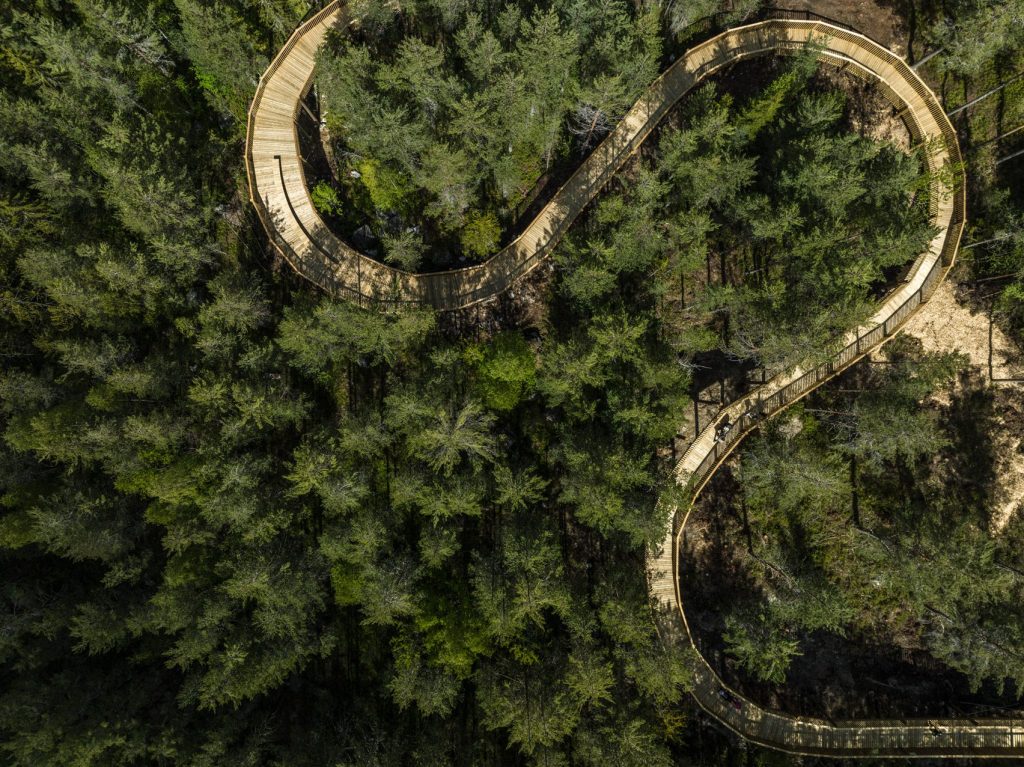
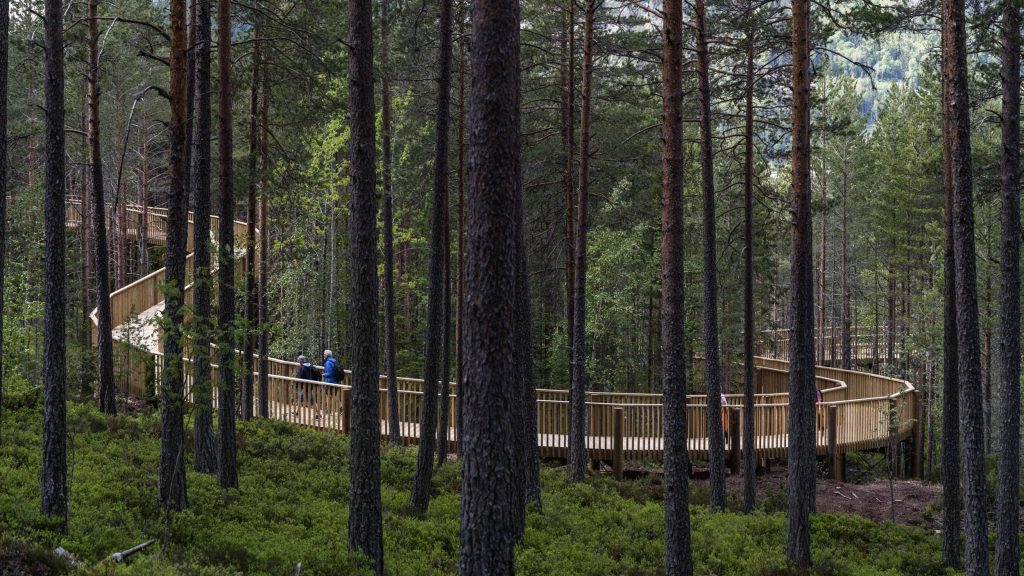
Treetop Walkway by EFFEKT in Hamaren Activity Park
To protect the nature during the building process, the structure was assembled on site using only small and straight prefabricated elements using local craftsmanship techniques and small machinery. When joined together the segments form an organic shape that bends around the trees and along the mountain.
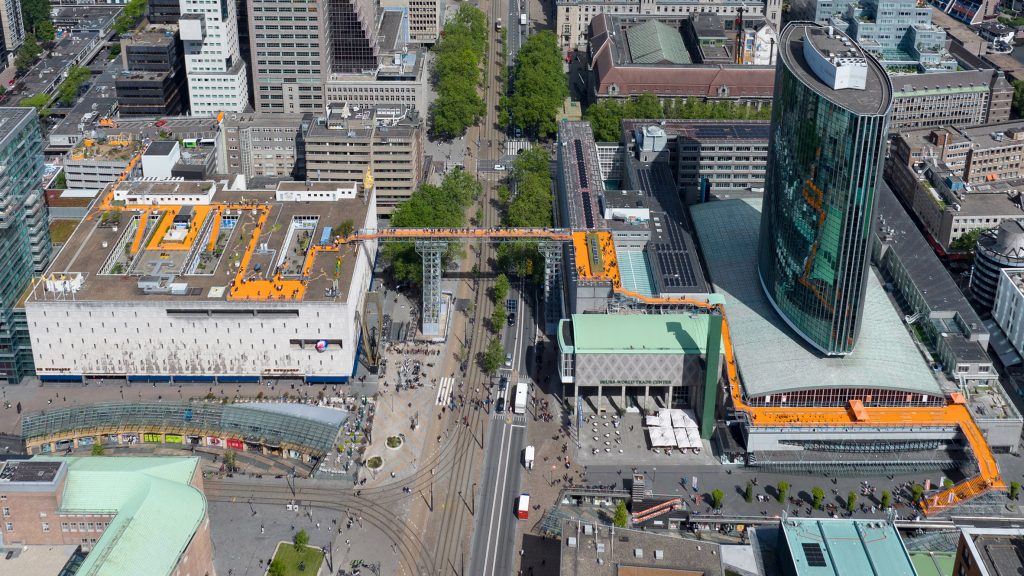
Rotterdam Rooftop Walk by MVRDV
Those who prefer urban jungle to the scenic nature views would appreciate Rotterdam Rooftop Walk, a temporary walkway designed by Dutch architecture studio MVRDV. The bright orange walkable rooftop installation extends up the side of Rotterdam’s World Trade Centre and creates a bridge across to the city’s Bijenkorf department store inviting visitors to venture across an array of the city’s rooftops at a height of 30 metres. The team sees it as an opportunity to bestow a new rooftop park on Rotterdammers.
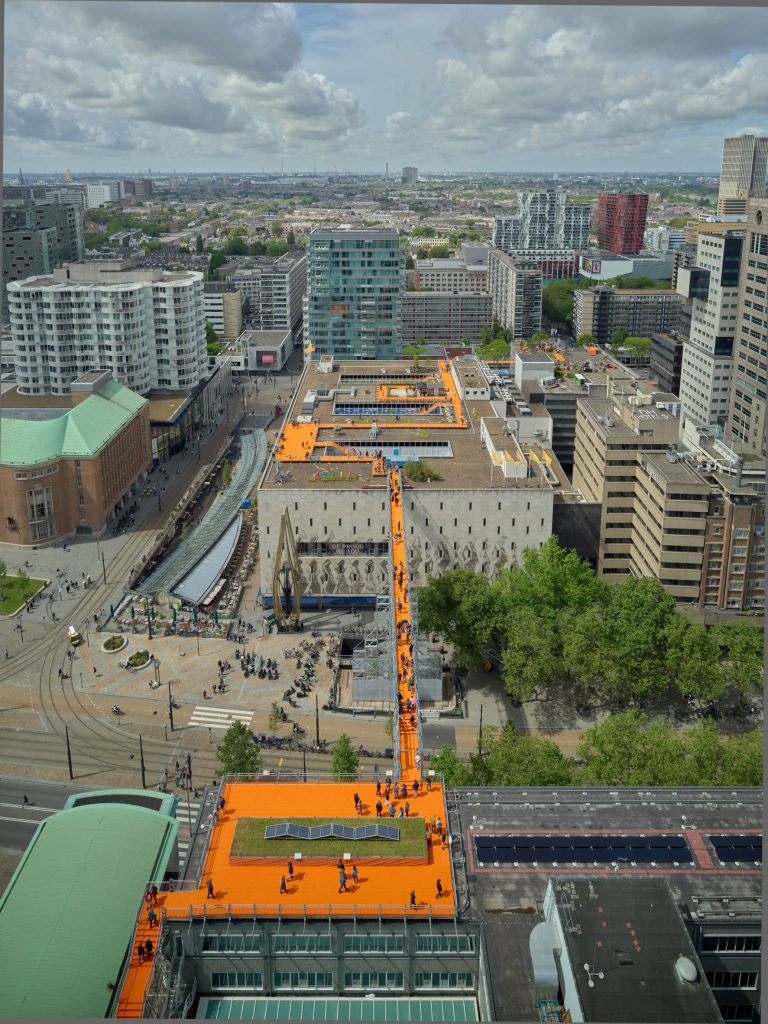
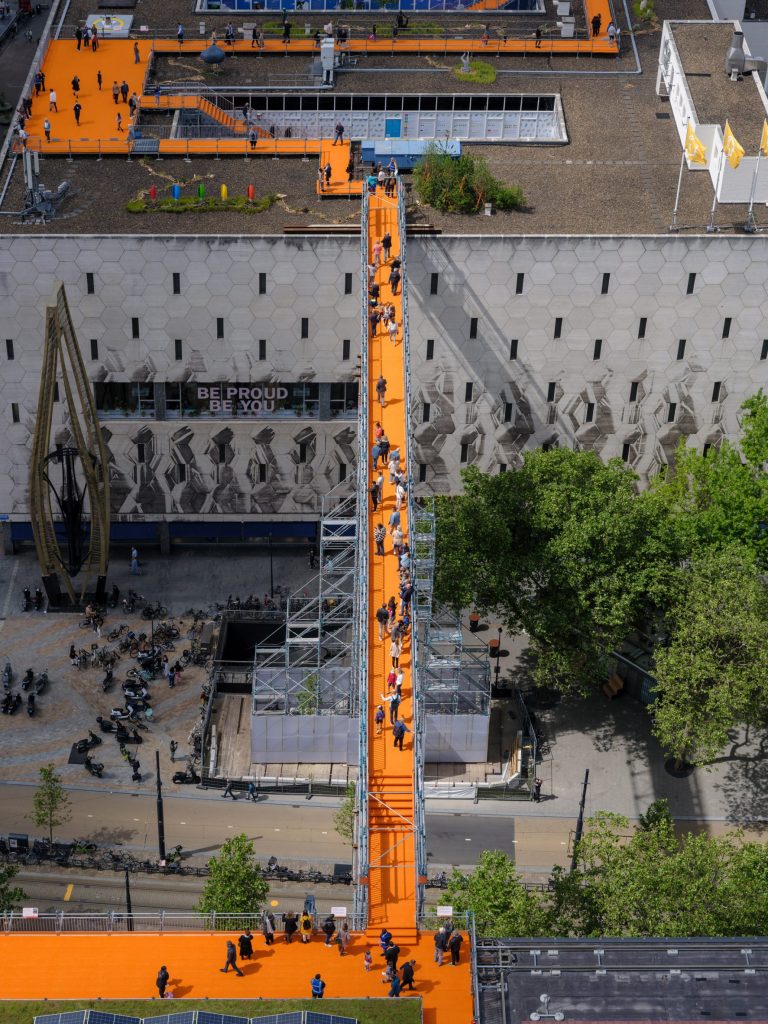
Rotterdam Rooftop Walk by MVRDV
Not only the 600 metres long Rotterdam Rooftop Walk provides the public with a new perspective on the city, it also aims to increase their awareness of the potential of the roofs in the urban context, especially in a city like Rotterdam where 18.5 km2 of flat roofs remains unused.
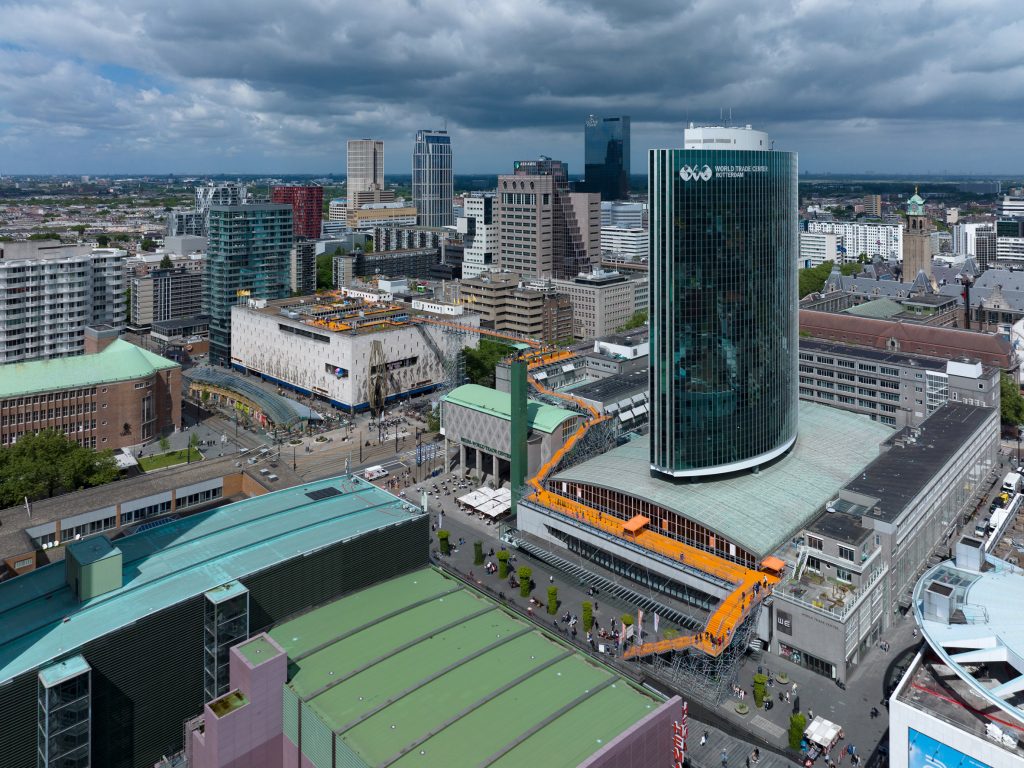
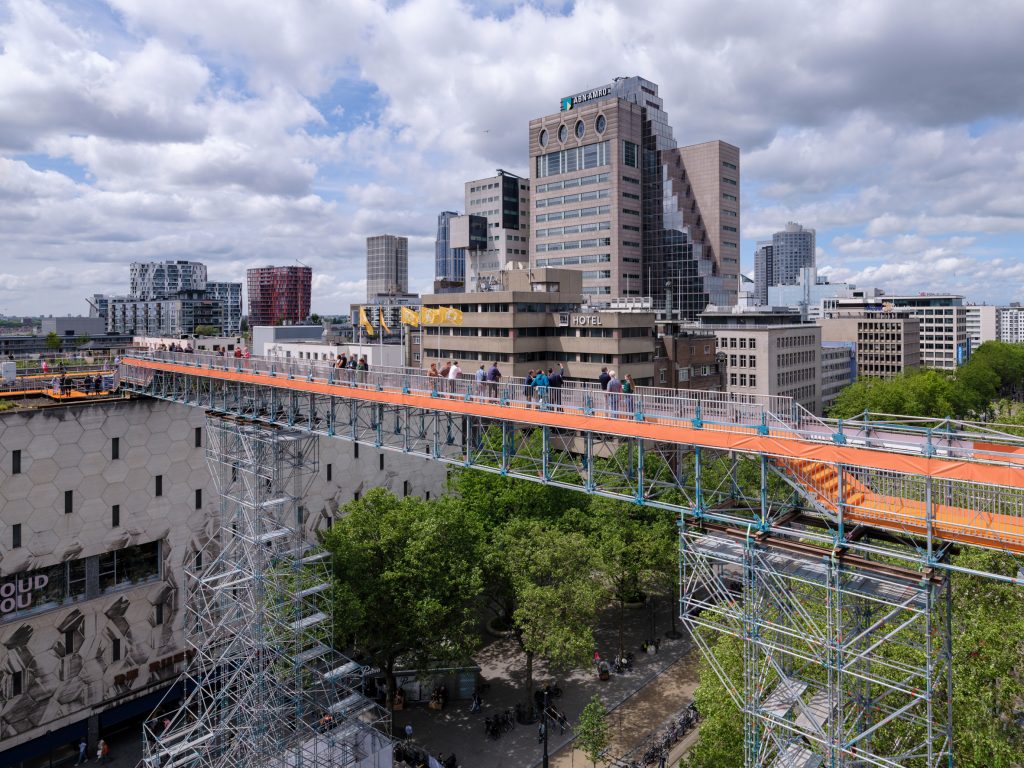
Rotterdam Rooftop Walk by MVRDV
In the rooftop exhibition, educational displays and demonstrations during the Rotterdam Rooftop Days initiative, artists, designers, and architects show how much is possible if we use our roofs efficiently for greenery, water storage, food production, and energy generation. This showcases how roofs can contribute to a more liveable, biodiverse, sustainable, and healthy city. Rooftop programming can help with major issues such as climate change, the housing crisis, and the transition to renewable energy, by addressing the problem of the scarcity of space in cities.